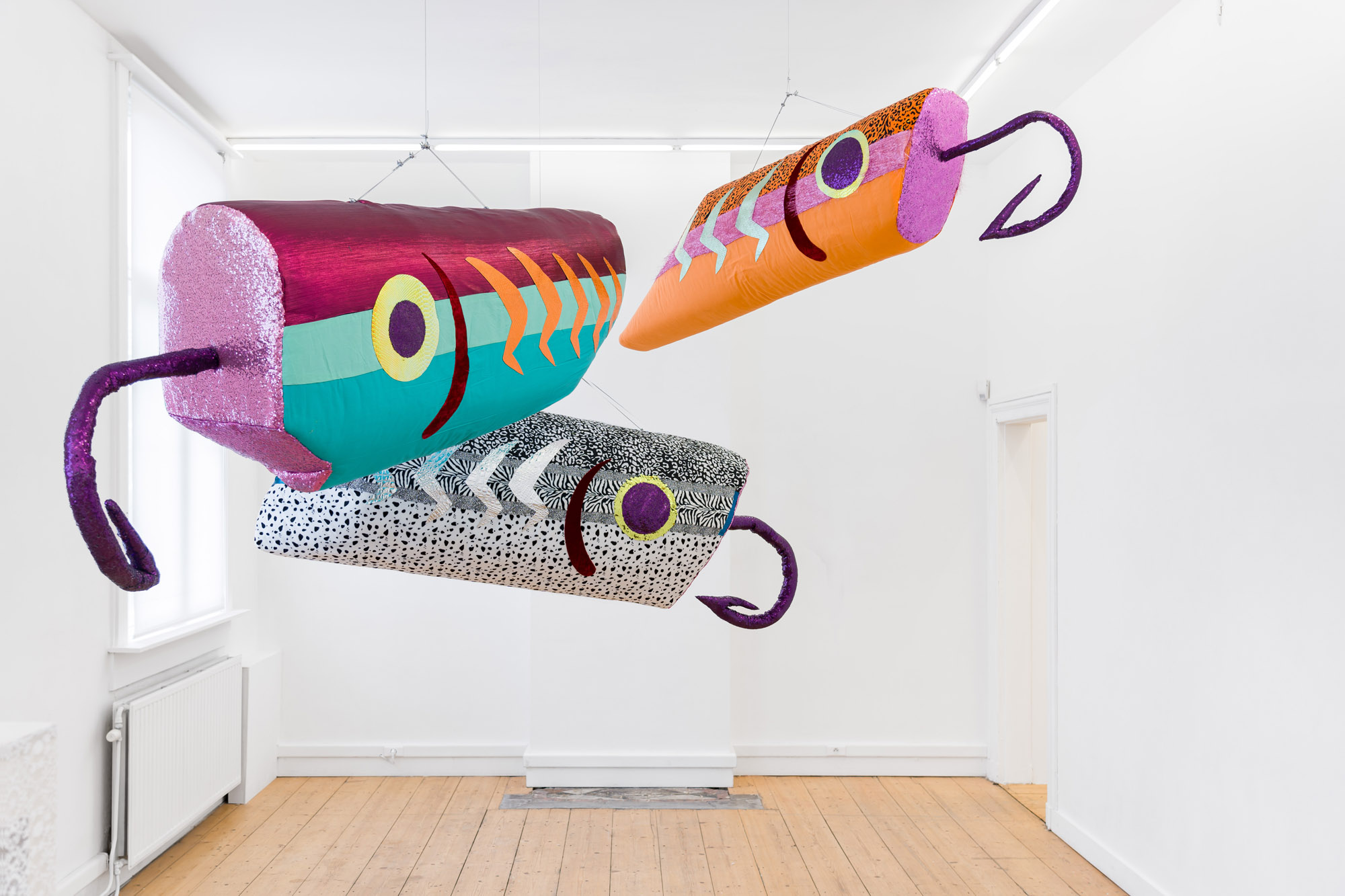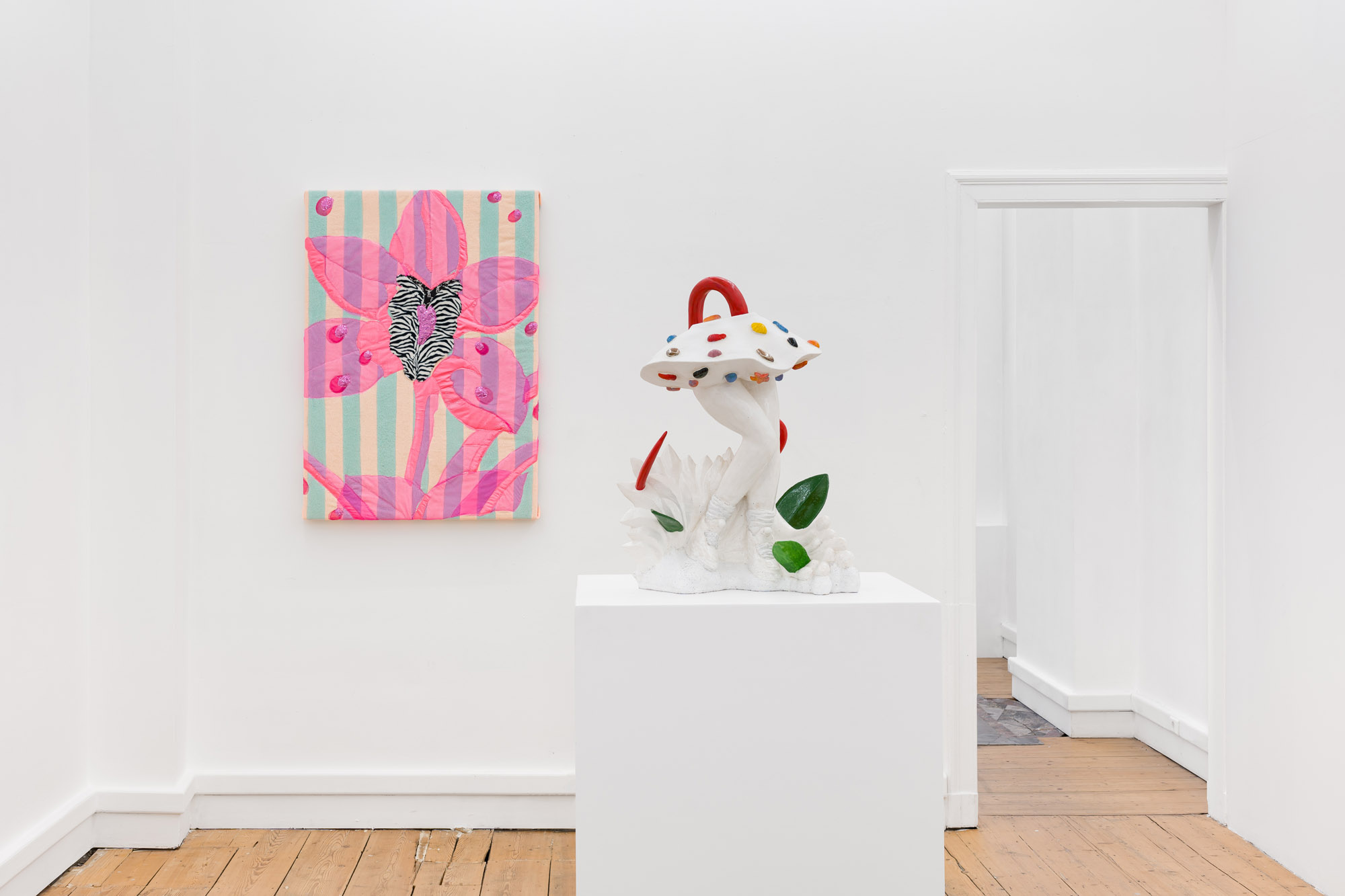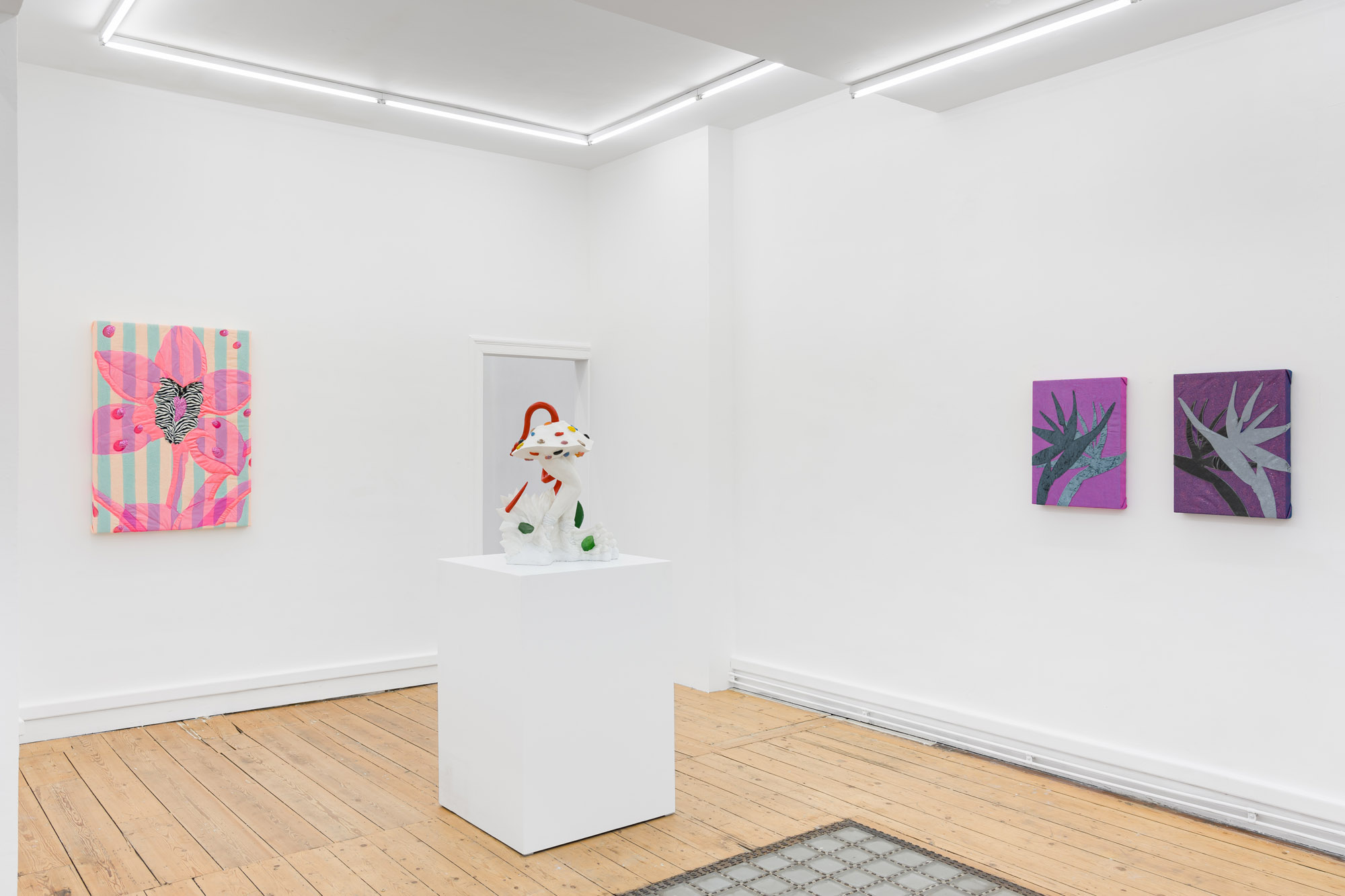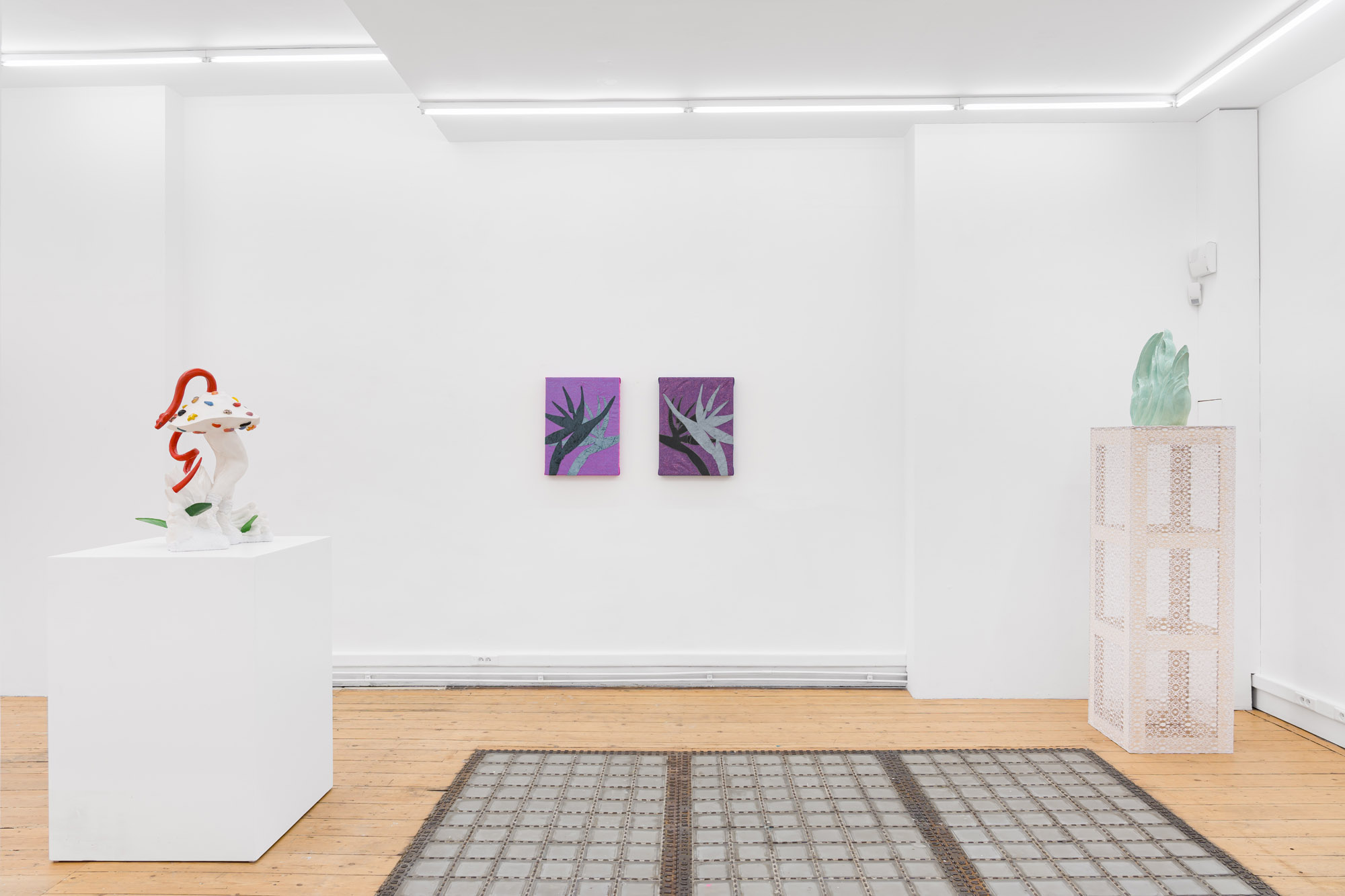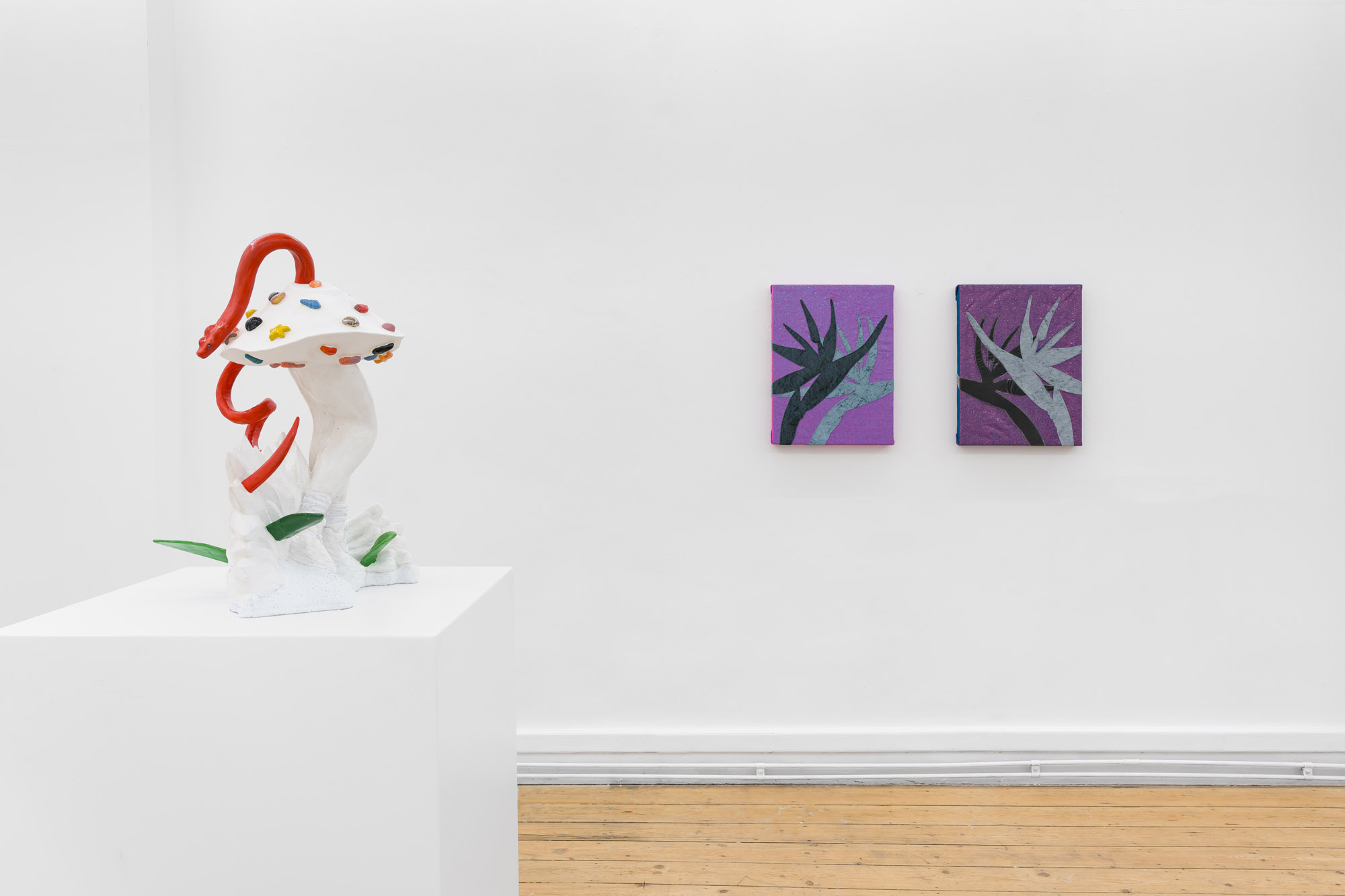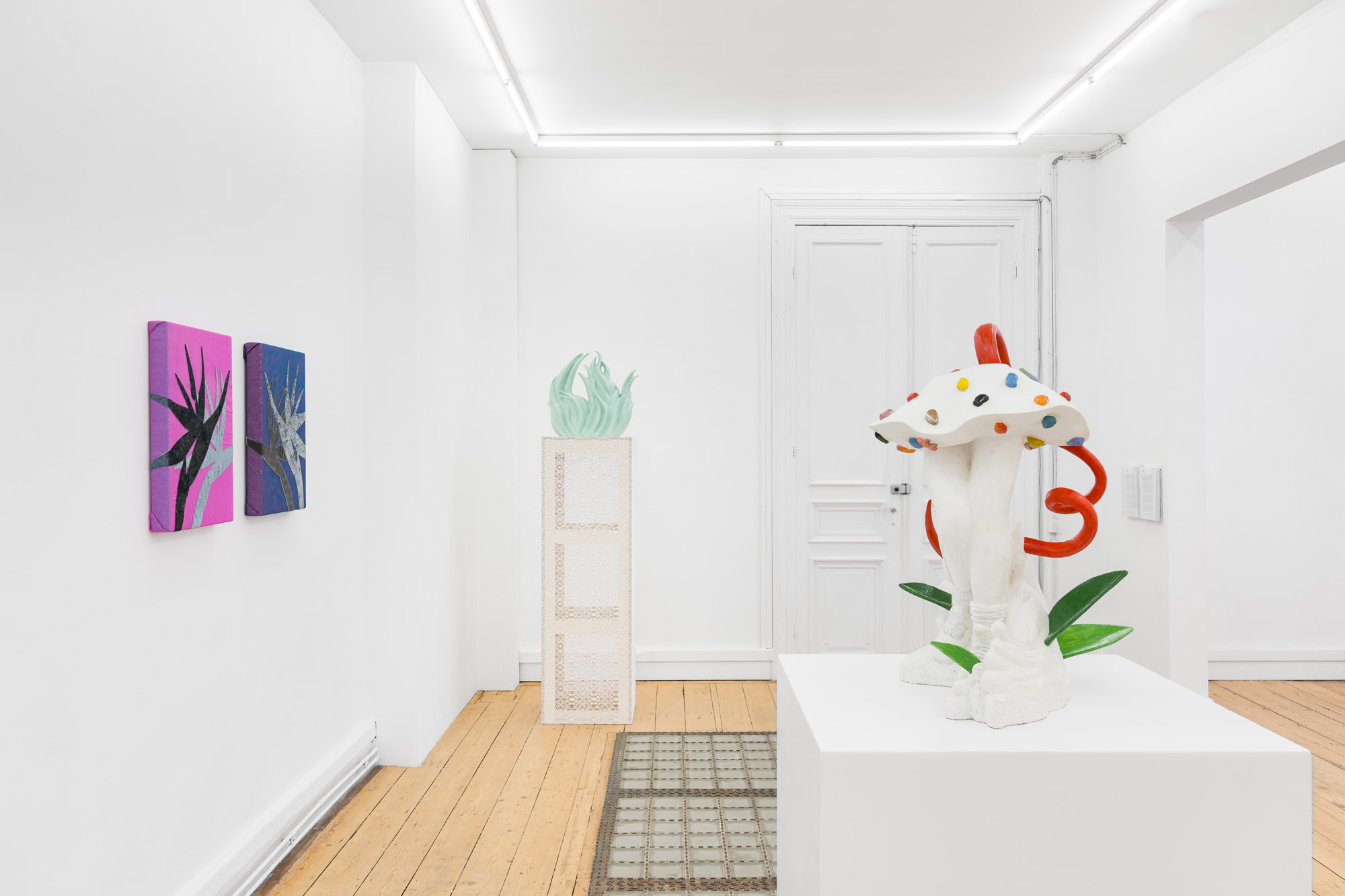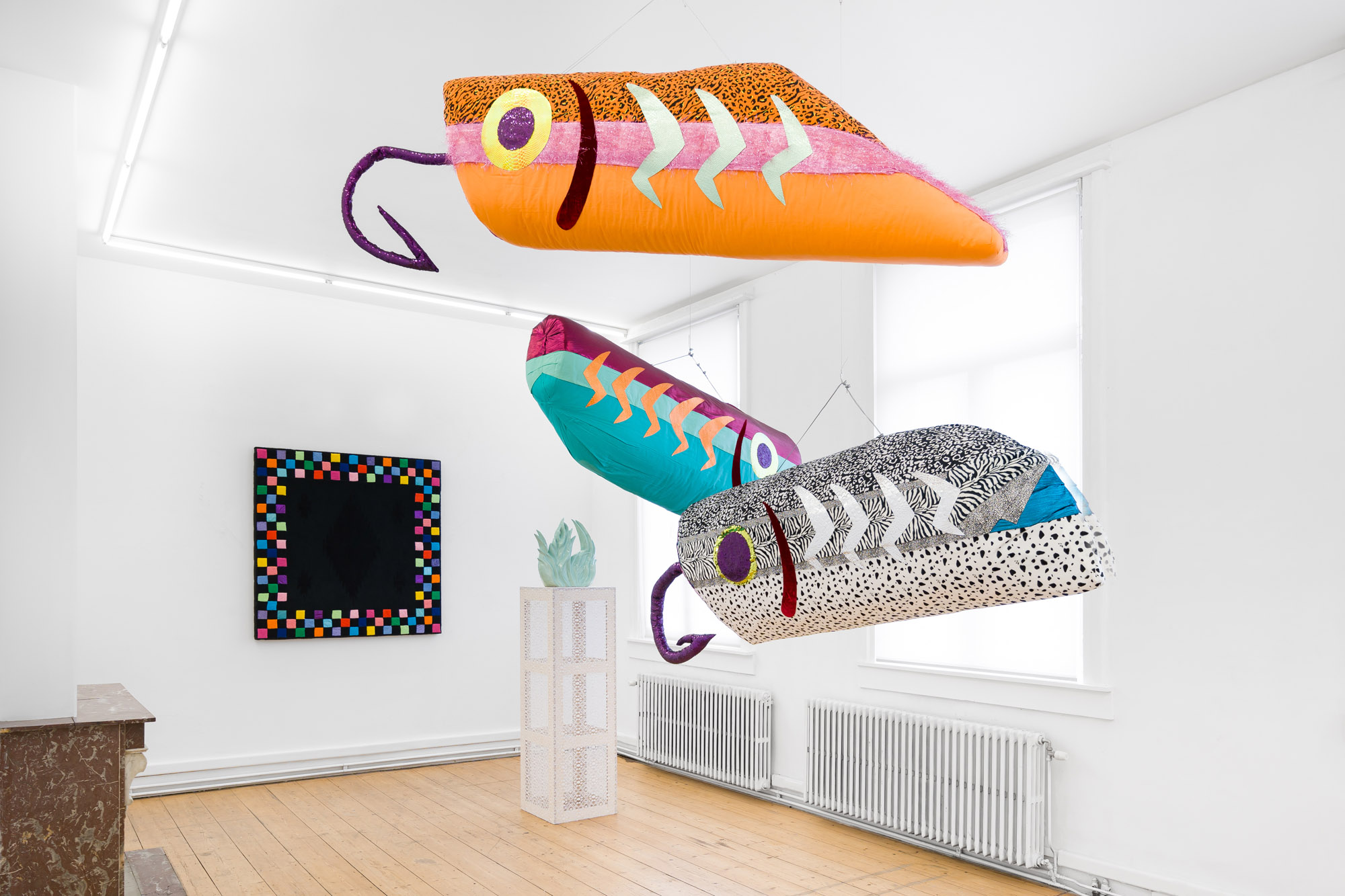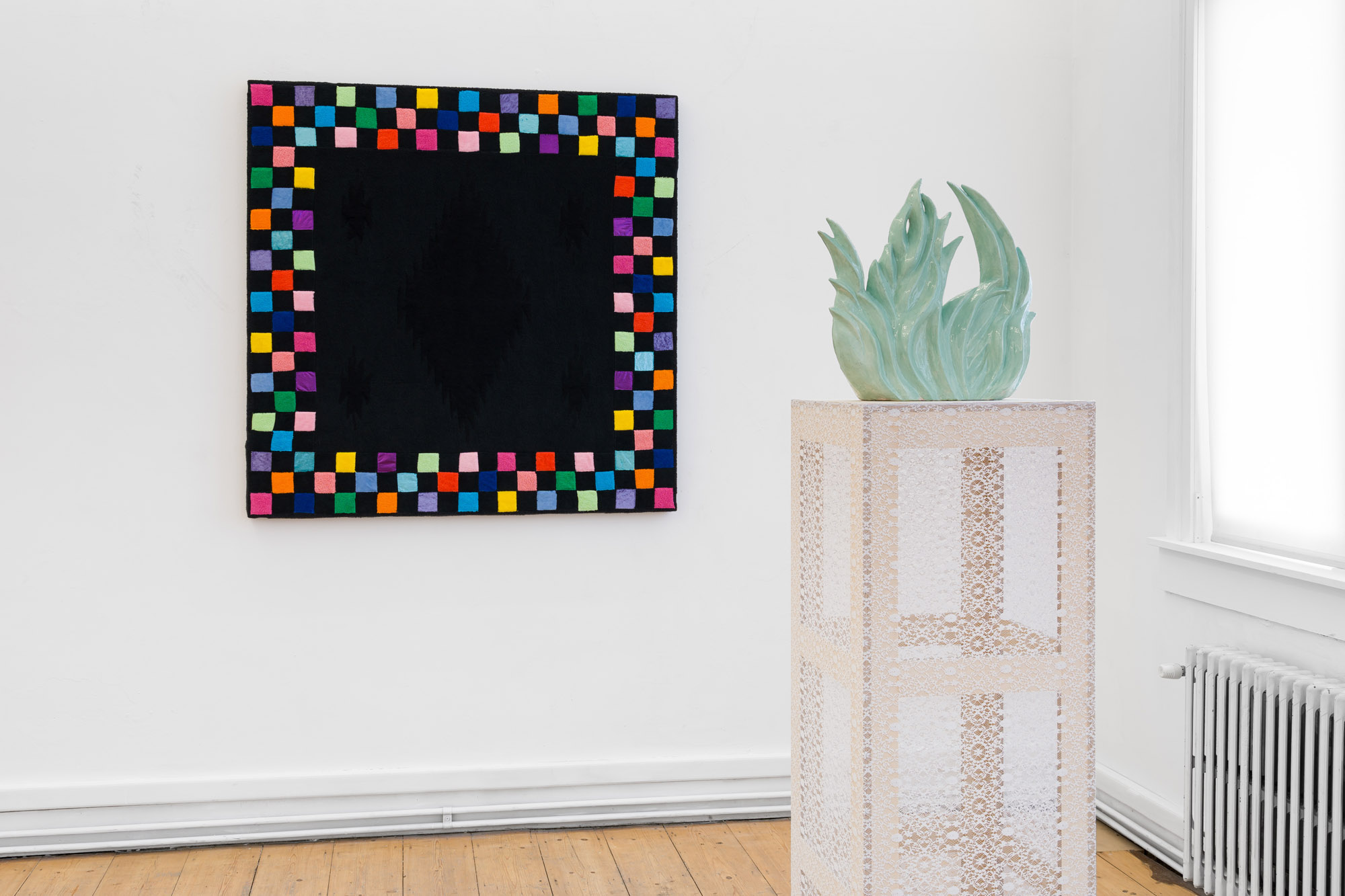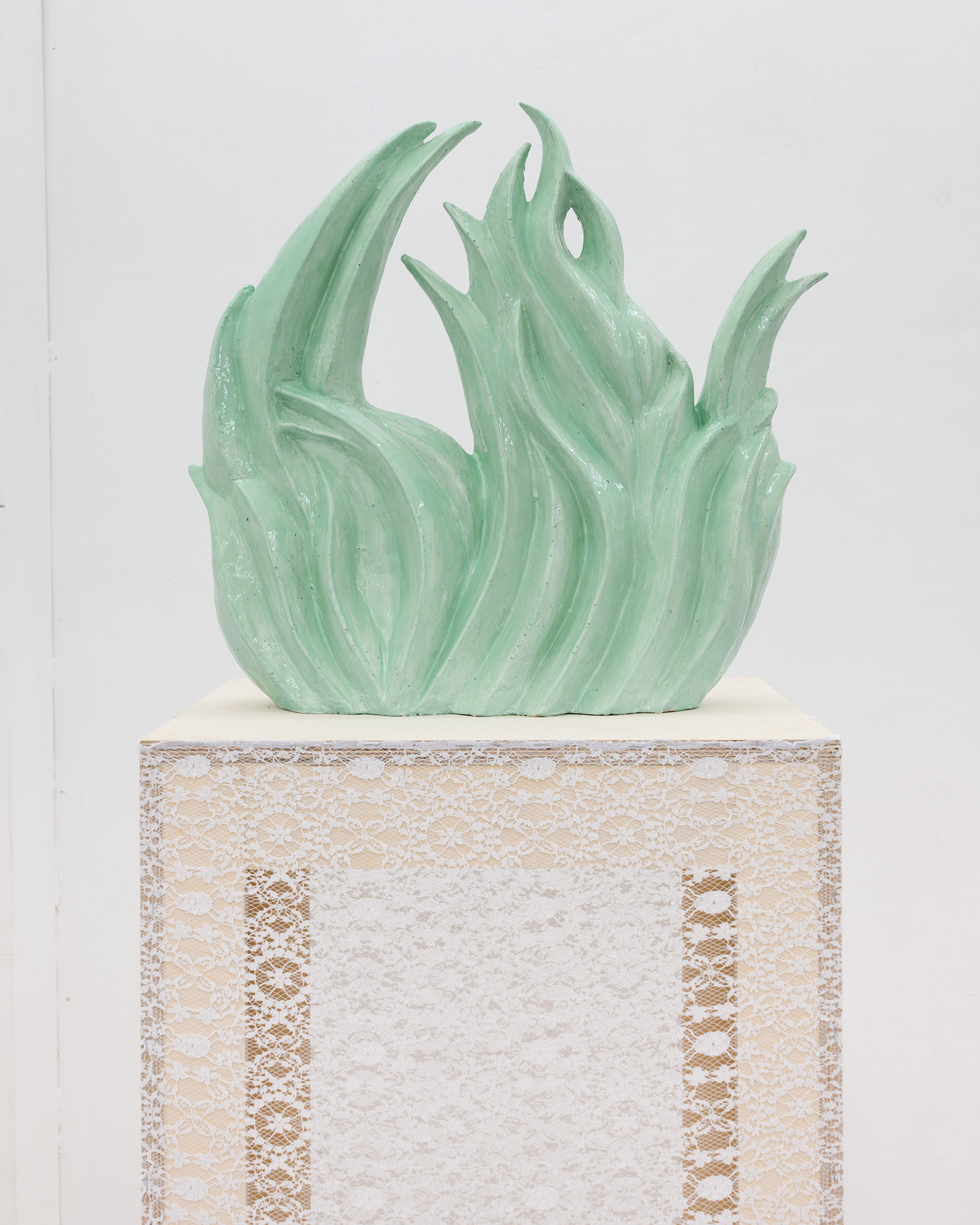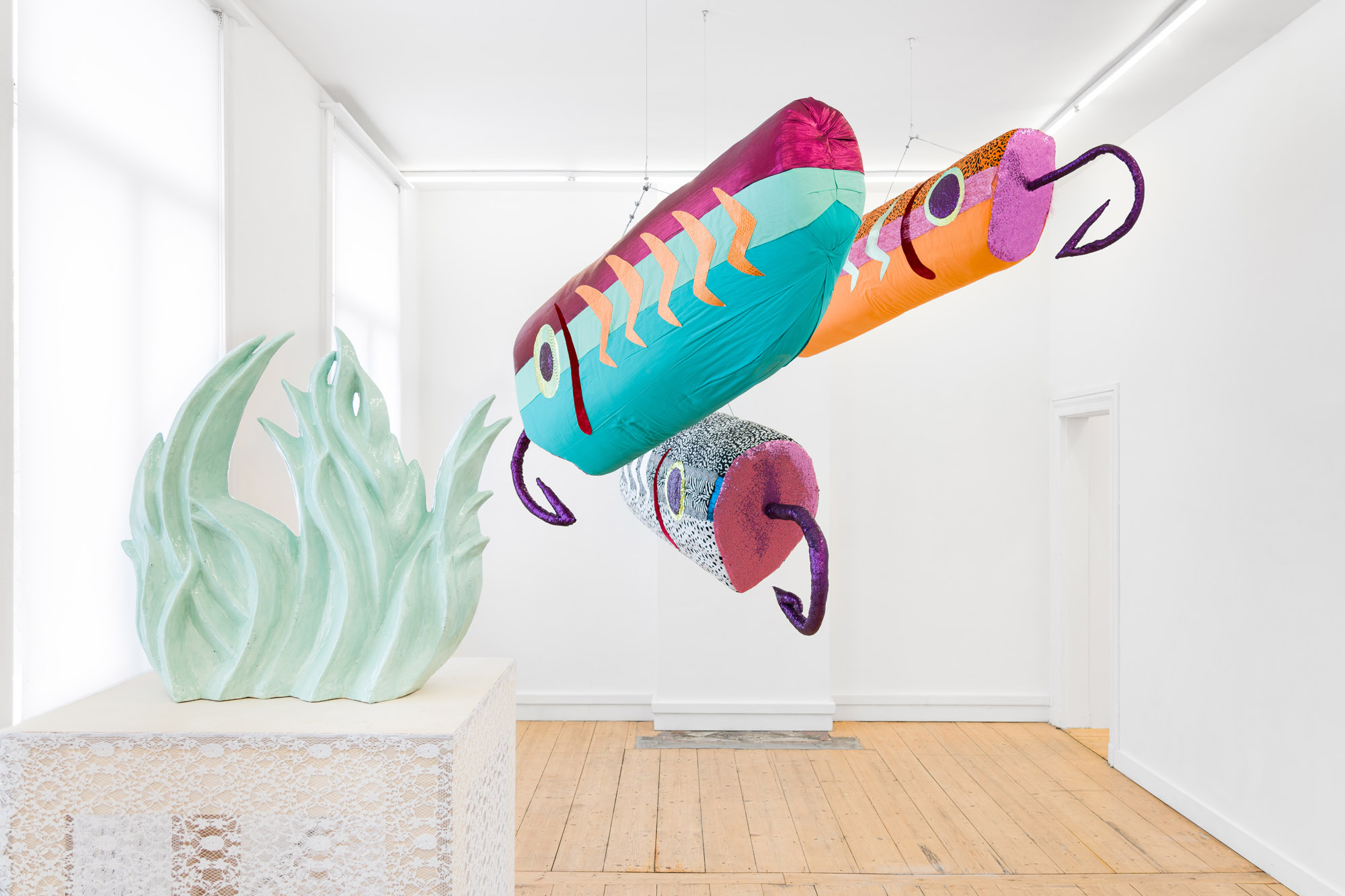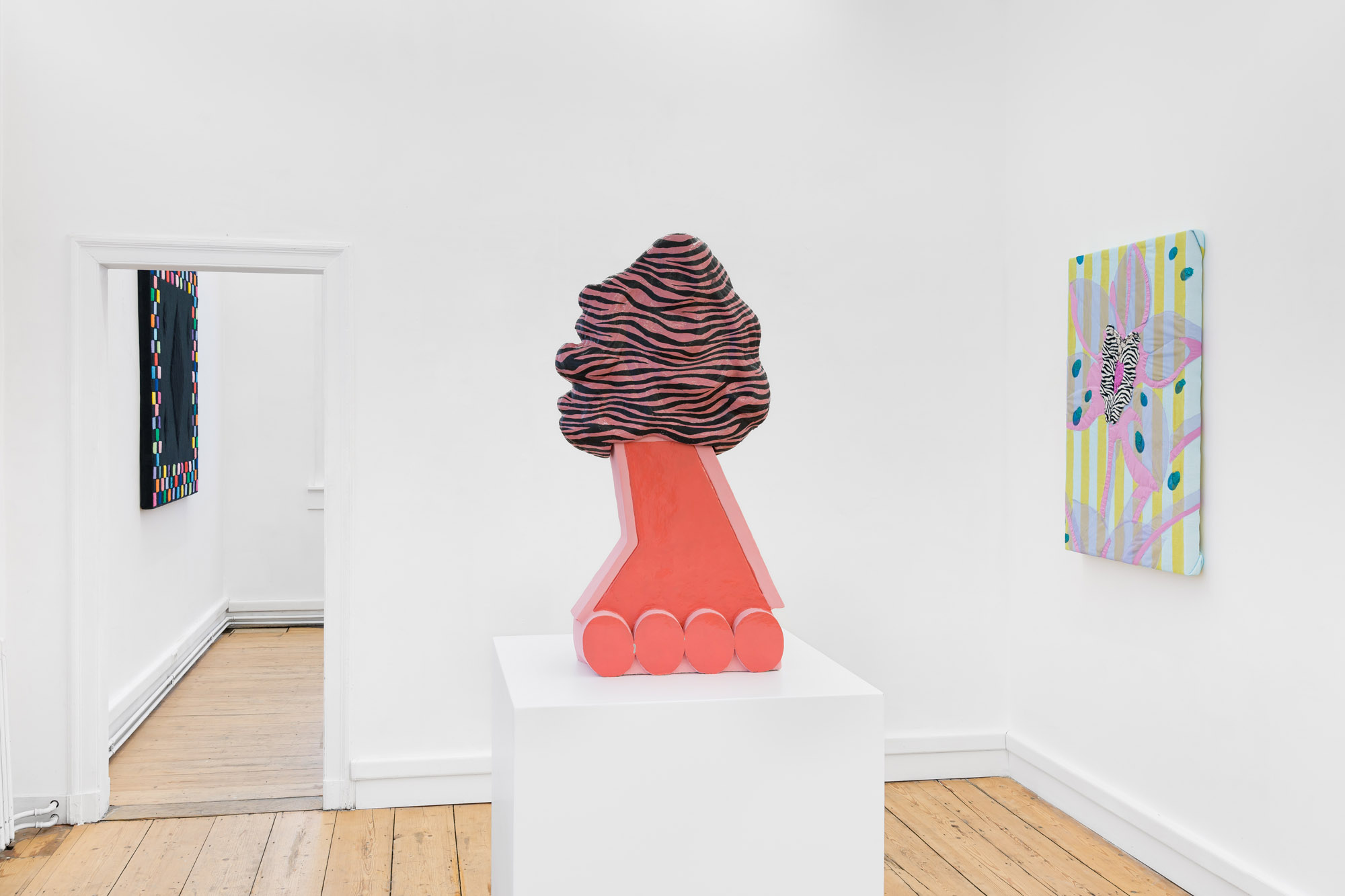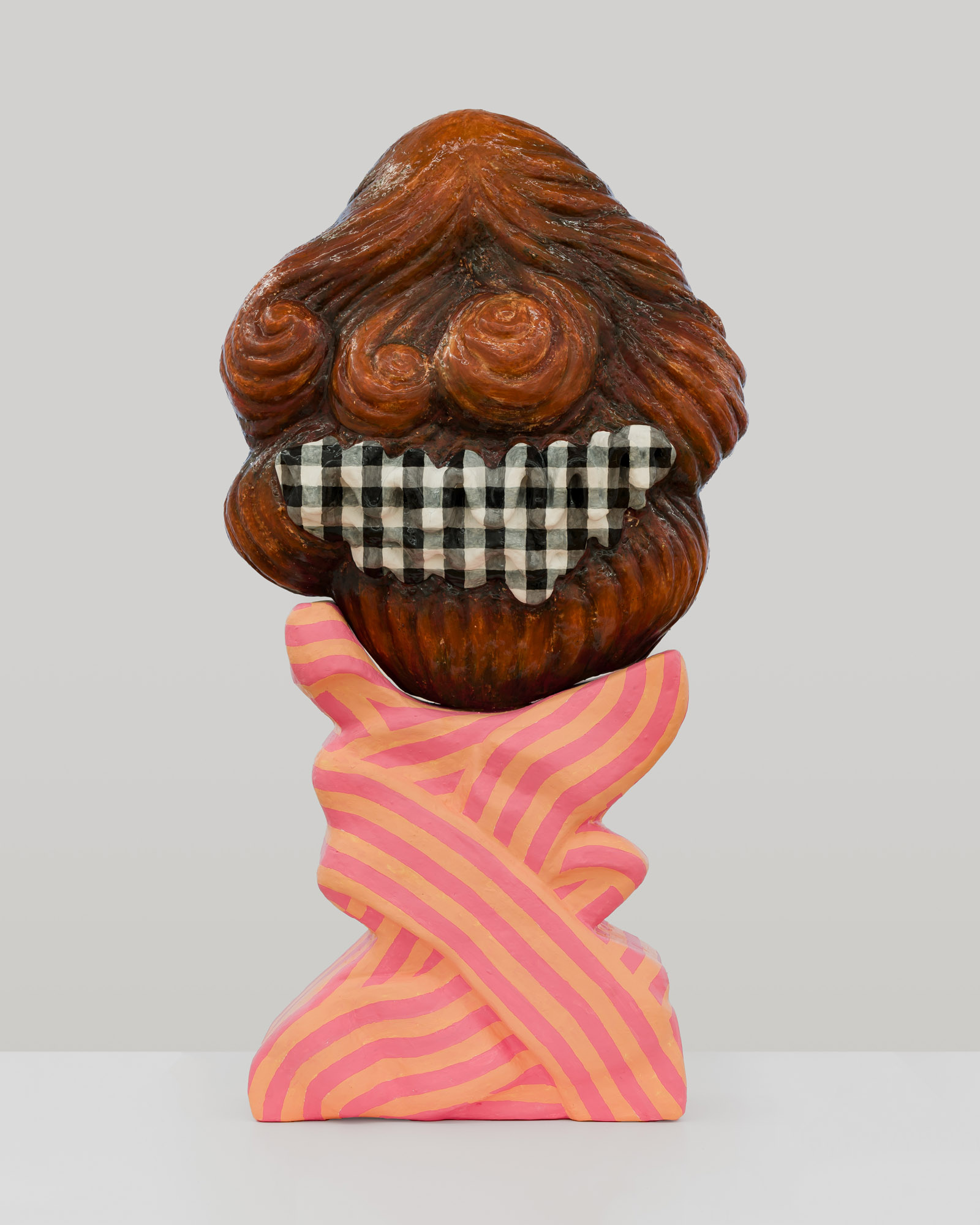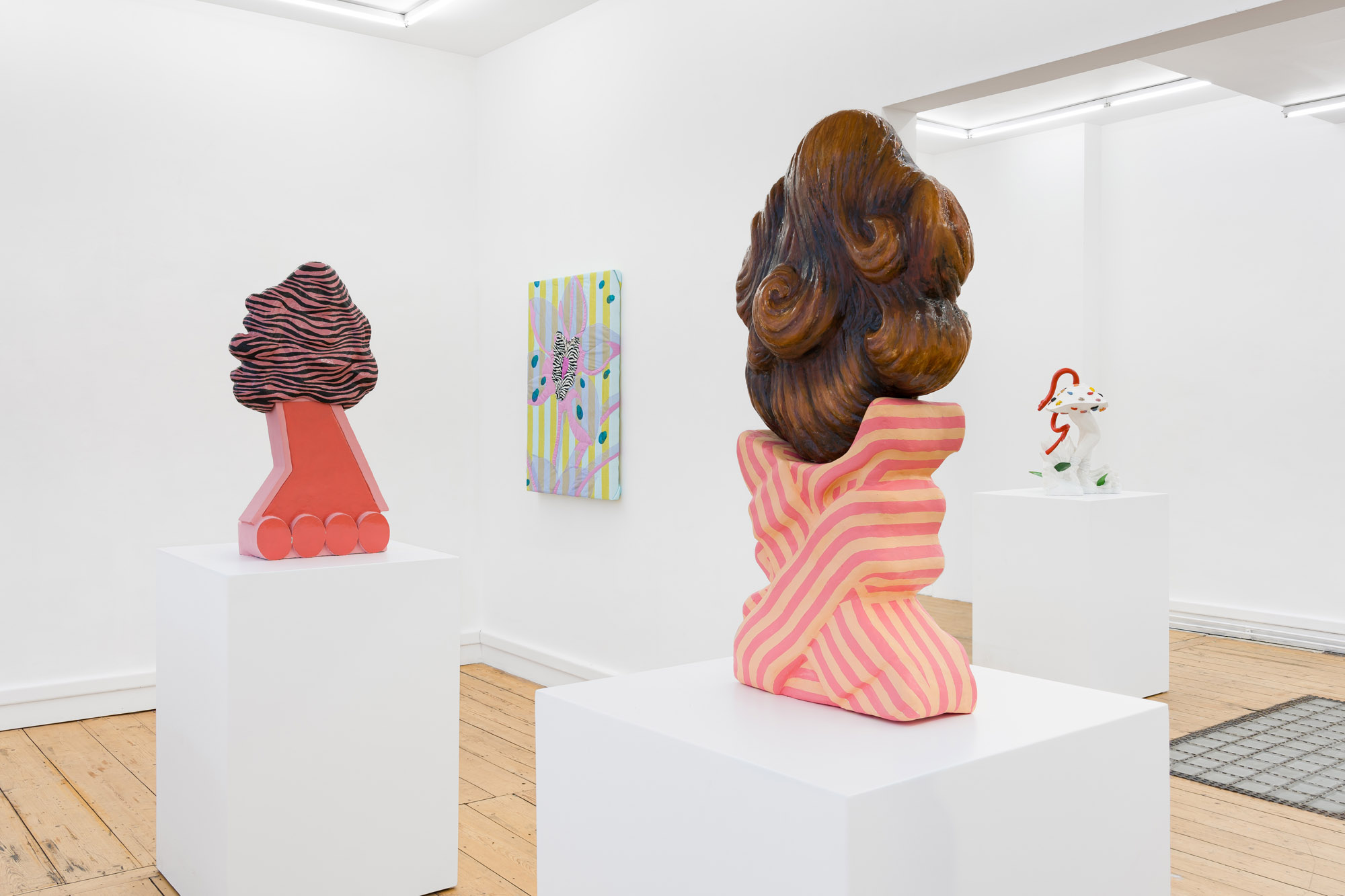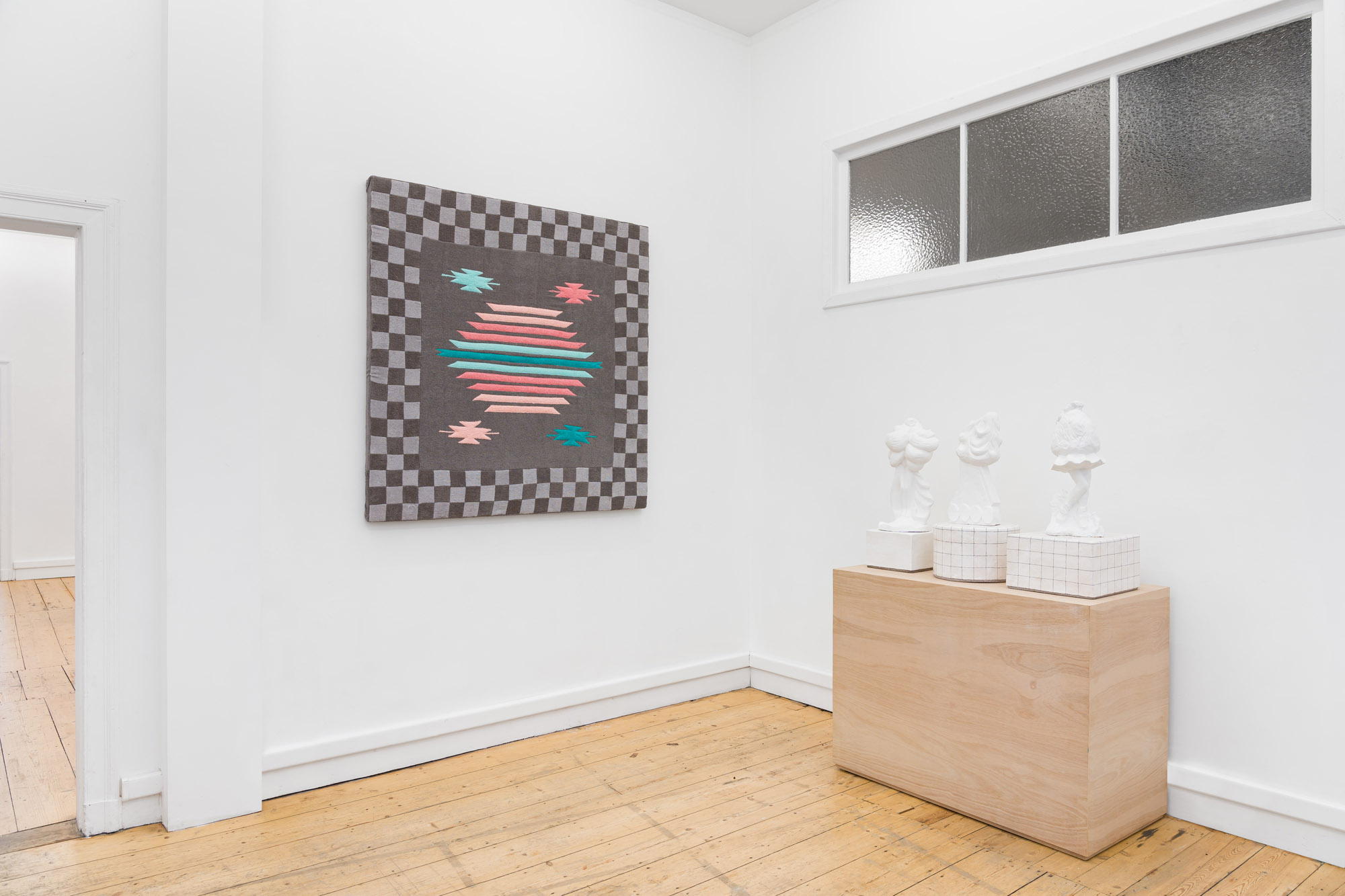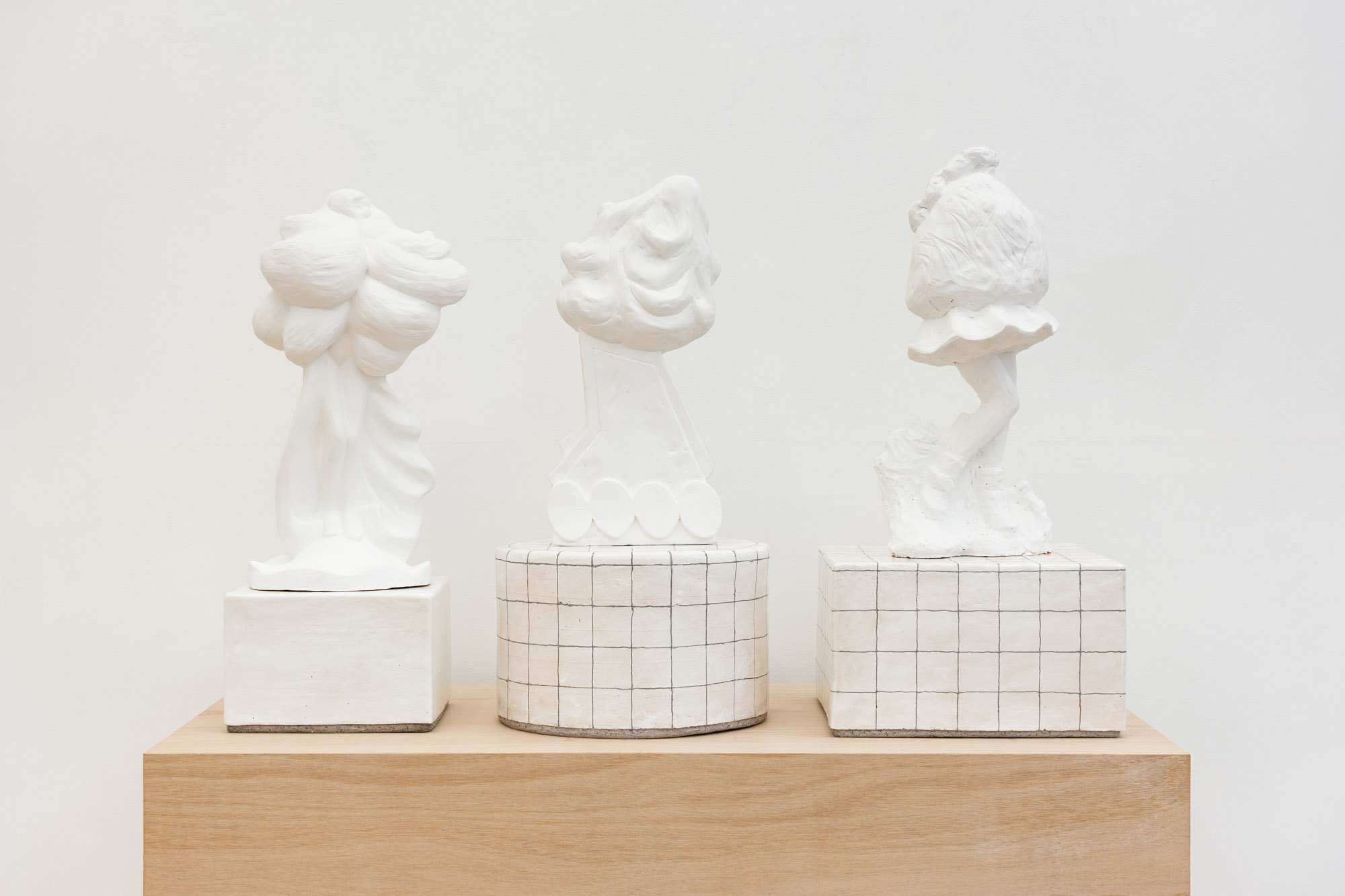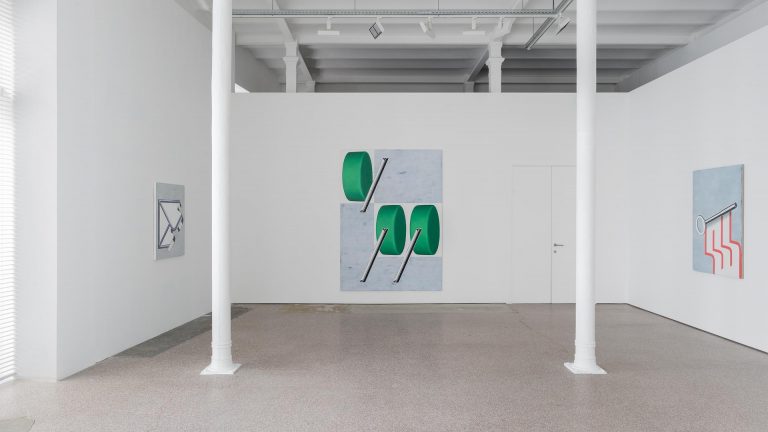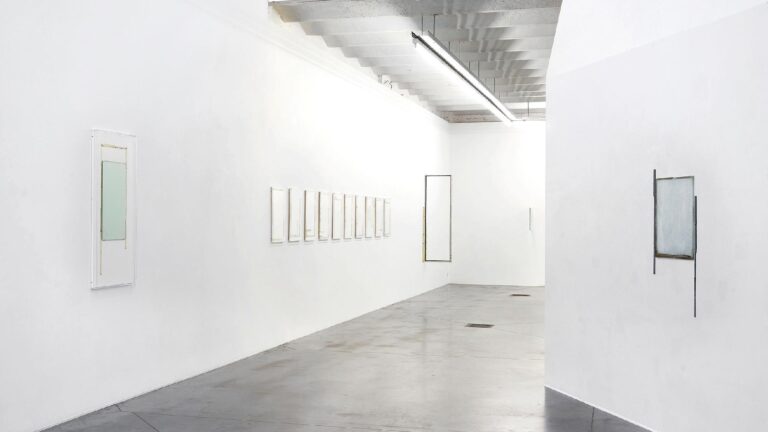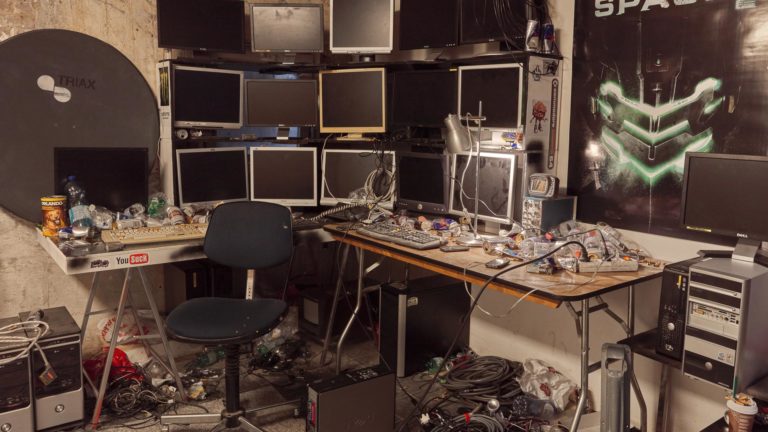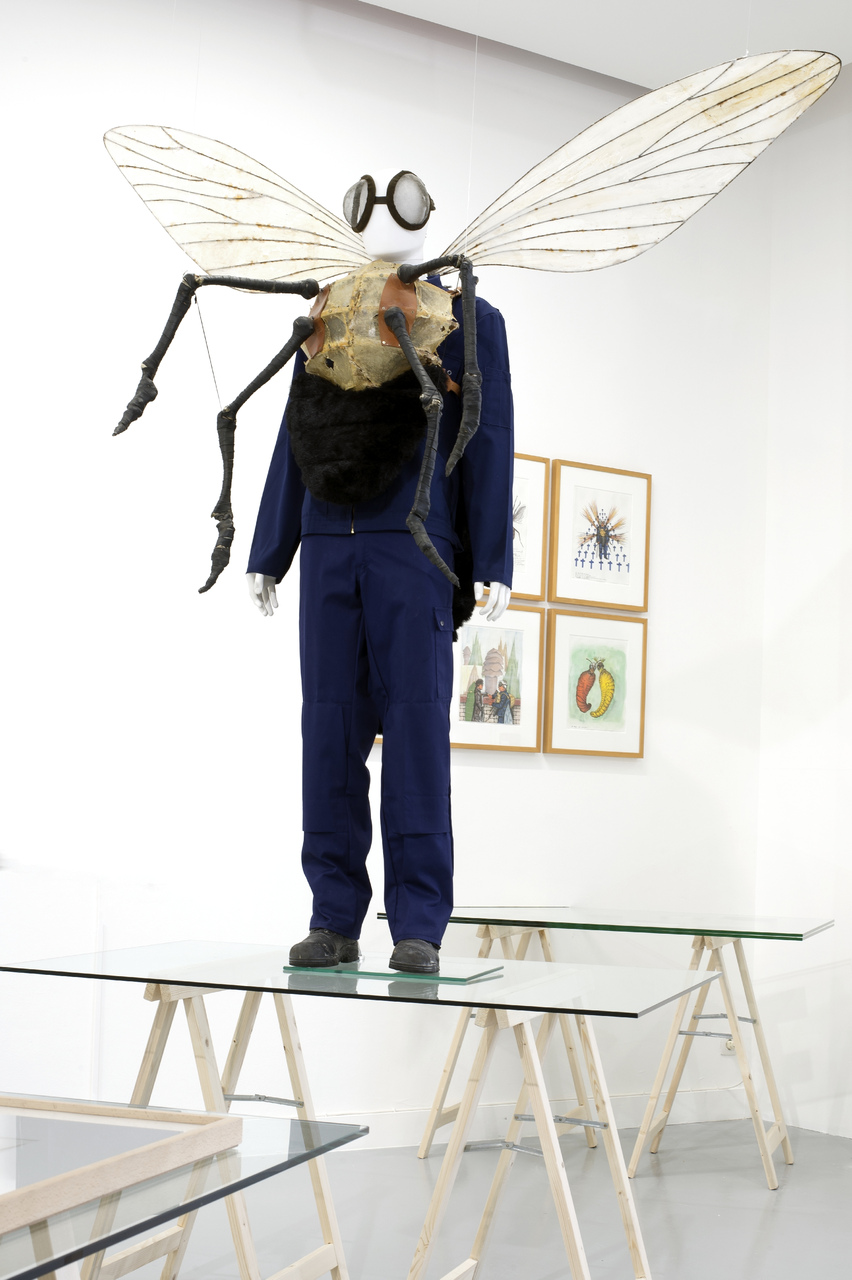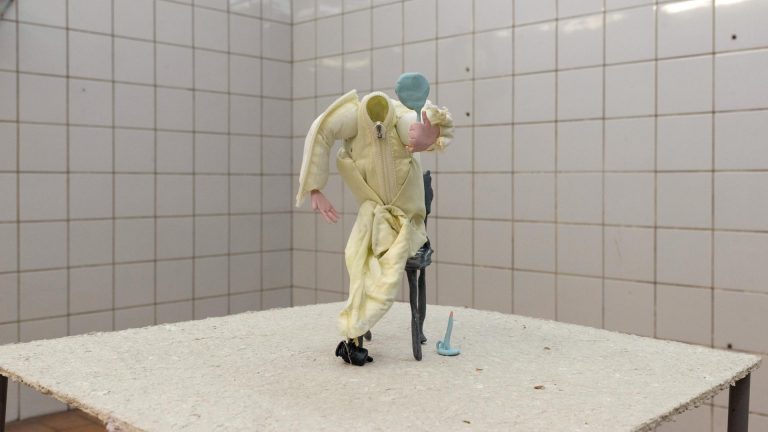Artist: Tramaine De Senna
Exhibition title: Luckx Interior
Venue: Fred & Ferry, Antwerp, Belgium
Date: May 16 – June 8, 2024
Photography: Tomas Uyttendaele / all images copyright and courtesy of the artist and Fred & Ferry, Antwerp
With Luckx Interior, Tramaine de Senna presents a space where pop imagery, nature, and the human form are dancing with the artist’s profound understanding of art history, architecture, philosophy, and fashion. Fabrics, ceramics, and drawings are having a blast in a vibrant celebration of ideas, adorned with sparkling embellishments, shiny glazes, animal prints, and bold colours. In her exploration of visual theory, de Senna deliberately contrasts prevailing norms and patterns, seeking to unravel the migration of forms and the construction of cultural appearances. Unlike mere appropriation, her work delves into the origins of objects, connecting them with the accumulation of the times and the vast array of human creation.
Drawing inspiration from matchbooks, magazines, LP-covers, movie sets, the runway, industrial environments, and anthropocentric questions, de Senna has a unique way of layering cultural history into her works. She looks at our human legacy through a wide-angle lens that transcends temporal boundaries, and recognises that the trends and standards we’ve elected today are all products of what came before. Or, rather, she regards the buildup of all prior visuals, spaces, and concepts as a fluid continuum where past and present coalesce. ‘Even though it has been a long time ago, it all exists now, albeit in different forms’, she says. That’s how contrapposto legs easily remind of classical sculptures, while whimsical mushrooms bring in a sense of humour, and the boots on their feet tie the sculpture’s pose to our contemporary days. Within her work, the distance between timeframes has been removed. Think of it as history without the element of time. De Senna connects disparate viewpoints, images, and ideas across different eras and cultures, guided by the boundaries of matter, while upholding a sensitivity for how our urban habitats are decorated, experienced, and lived in.
The artist’s thorough insight of theory and philosophy sharpens her multiple, all-encompassing thinking, making the connections she draws crystal clear. In her rebellion against modernism’s shedding of decoration, she refers to art critic Boris Groys, who sees that people’s distrust of the surface lies in their fear of manipulation; ‘therefore, they seek to destroy the surface of the object, find the crack. This is a strategy of modernism.’ Talking about her own personal affinity with colours of plenty, vivid imagery, and “feminine” materials (or what is culturally regarded as such), de Senna mentions feeling a certain restraint against the hygiene of streamlined modernism. From the 1930s on, everything started to look more clean and alike. Architecture became more sleek, allowing for surfaces to be easier to wipe.
Besides the urge to bring back a sense of exuberance to our spaces, de Senna is, at the same time, interested in how movements within the aesthetics of design and architecture have the ability to spread widely throughout other aspects of society. Take Jean Paul Gaultier’s pointy bras leaving wardrobes alongside the emergence of cleaner lines, or the coming and going of luxurious-looking interiors of fifties cars. Certain colour palettes are first brought alive on runways, only to be later found in our kitchens. Along these lines, the artist is fascinated with the sheer ingenuity of humanity. From engineering bridges and the internet, to the evolution of shades and materiality, de Senna reflects on every individual’s role in the vast network of human knowledge and experience. Like a cascading waterfall, ideas and insights flow from generation to generation, shaping the delegation of space and our experience with where we live. How many people did it take to build our current world?
Whenever de Senna passes by the Albert Canal in Deurne, she can’t help but notice the bustling infrastructure of shipping, logistics, and trade. The LEGO-like colours run from primary hues to neon shades in reds, cobalt blues, ultramarine, yellows, greens, oranges, greys, clearly avoiding pinks and magentas. Similarly, in nature, male birds signal their health and vitality through colourful plumage, vying for attention. It’s a “manly” exhilaration, exuberant in its own way; the beauty of which is weirdly overlooked, according to the artist. She calls it the seen unseen. Why is it that this type of exuberance remains invisible? Why is there a certain disparity between the zest of what’s considered manly, and the perceived aesthetic preferences of women? ‘It’s strange to think of [the] exuberance [of this manscape], and then look at certain “female aesthetics” among Western women and some of my works. Why [is it perceived differently]?’ It’s a question that invites exploration into the complex interplay between culture, identity, and expression. It’s a question that guides the viewer as they waltz along de Senna’s luxurious visual language.
-Yasmin Van ‘tveld

